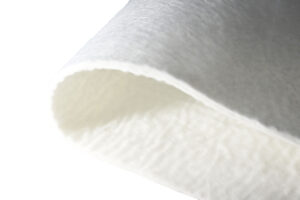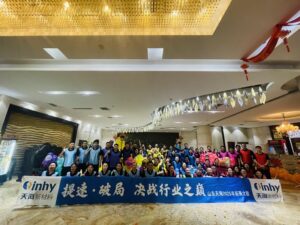The elongation of a geotextile refers to the extent to which a geotextile can stretch under tensile loading, usually expressed as a percentage.
Elongation is an important index to evaluate the flexibility and ductility of geotextiles.
Elongation testing of geotextiles is usually performed in a standard tensile test.
The following are the general elongation test steps for geotextiles:
Prepare standard geotextile specimens, usually rectangular in shape, with standard dimensions, according to applicable standards (such as ASTM D882).
Install or clamp the geotextile sample on the tensile testing machine to ensure that the size and clamping method of the sample meet the standard requirements.
Begin applying the tensile load and gradually increase the length of the specimen until the specified loading conditions are reached or the specimen breaks.
During the tensile test, record the tensile force loaded and the elongation of the specimen.

By calculating the ratio between the elongation of the sample during loading and the original length, and multiplying by 100, the elongation of the geotextile can be obtained.
The formula for calculating elongation is as follows:
Elongation (%) = (elongation of sample / original length) × 100
The elongation test results can be used to evaluate the extensibility and flexibility of the geotextile. High elongation indicates that the geotextile has good ductility and adaptability during the stretching process, and can absorb and disperse loads, thereby reducing stress concentration. This is especially important in some engineering applications, such as soil reinforcement, slope protection, protection, etc.
Please note that elongation may be affected by factors such as geotextile material, process and test conditions. It is recommended that applicable standard procedures be followed when testing and professional testing performed in a laboratory or testing facility to ensure accurate and reliable results.
Author

Founded in 2002, Tinhy's team focuses on the manufacturing, marketing, installation, application and research and development of geosynthetic materials.
View all posts





